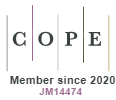Modelo Teórico-Conceitual para Gestão de Portfólio de Projetos Seis Sigma
DOI:
https://doi.org/10.5585/gep.v1i2.13Palavras-chave:
Six Sigma, Project Portfolio Management, Project SelectionResumo
O Projeto Seis Sigma tem sido usado por organizações em todo o mundo e ganhos expressivos têm sido reportados quanto ao aumento da qualidade e produtividade, redução de tempos de entrega e diminuição dos custos de processos críticos. Neste contexto, uma das questões que tem se mostrado bastante relevante é a forma como se dá a seleção, priorização e gestão do conjunto de projetos Seis Sigma. Esse parece ser um tema pouco explorado pelas organizações e as consequências da não utilização de uma sistemática robusta para tal tarefa podem ser bastante negativas para organizações que já trataram de todos os problemas estruturais grandes “visíveis”. Sendo assim, o presente artigo traz uma proposta de modelo teórico-conceitual para gestão de portfólio de projetos Seis Sigma com utilização de elementos apresentados na literatura sobre os referidos temas. Esse modelo é parte de um trabalho acadêmico em andamento e deve ser empregado nas atividades subsequentes de pesquisa de campo, onde será investigado o processo de gestão de portfólio de projetos Seis Sigma em empresas brasileiras do setor automotivo.Referências
Antony, J. (2007). Is Six Sigma a management fad or fact? Assembly Automation, 27(1), 17-19. http://dx.doi.org/10.1108/01445150710724658
Antony, J.; Kumar, M.; Madu, C. N.; Montgomery, D. C.; and Park, S. H. (2008). Common myths of Six Sigma demystified. International Journal of Quality & Reliability Management, 25(8), 878-895.
http://dx.doi.org/10.1108/02656710810898658
Antony, J. and Banuelas, R. (2002). Key ingredients for the effective implementation of Six Sigma program. Measuring Business Excellence, 6(4), 20-27.
http://dx.doi.org/10.1108/13683040210451679
Archer, N. P. and Ghasemzadeh, F. (1999). An integrated framework for project portfolio selection. International Journal of Project Management, London, 17(4), 207-216.
http://dx.doi.org/10.1016/S0263-7863(98)00032-5
Bertels, T. and Patterson, G. (2003). Selecting Six Sigma projects that matter. Six Sigma Forum Magazine, 3(1), 13-17.
Blichfeldt, B. S. and Eskerod, P. (2008). Project Portfolio Management – There’s more to it than what management enacts. International Journal of Project Management, 26, 357-365.
http://dx.doi.org/10.1016/j.ijproman.2007.06.004
Carvalho, M. M. (2002). Selecionando Projetos Seis Sigma. In: Rotondaro, R. G. (Org.). Seis Sigma: estratégia gerencial para melhoria de processos, produtos e serviços. (1a. ed., pp. 49-70), São Paulo: Atlas.
Carvalho, M.M. e Rabechini, R. Jr. (2005). Construindo competências para gerenciar projetos: teoria e casos. São Paulo: Editora Atlas, 320p.
Cooper, R. G.; Edgett, S. T.; and Kleinschmidt, E. J. (1999). New product portfolio management: practices and performance. Journal of Product Innovation Management, New York, 16, 333-351.
http://dx.doi.org/10.1016/S0737-6782(99)00005-3 http://dx.doi.org/10.1111/1540-5885.1640333
Cooper, R. G.; Edgett, S. T.; and Kleinschmidt, E. J. (2001). Portfolio management for new product development: results of an industry practices study. R&D Management, Oxford, 31(4), 361-380.
Fernandes, M. M. e Turrioni, J. B. (2007). Seleção de projetos Seis Sigma: uma aplicação no setor automobilístico. Produção, São Paulo, 17(3), 579-591.
Fundin, A. P. and Cronemyr, P. (2003). Use customer feedback to choose Six Sigma projects. Six Sigma Forum Magazine, 3(1), 10-18.
Gijo, E. V. and Rao, T. S. (2005). Six Sigma implementation-hurdles and more hurdles. Total Quality Management, 16, 721–725.
Goe, T. and Xie, M. (2004). Improving on the six sigma paradigm. The TQM Magazine, 16(4), 235-240.
http://dx.doi.org/10.1108/09544780410541882
Harry D. and Schroeder, R. (2000). Six Sigma: the breakthrough management strategy revolutionizing the World’s Top Corporation. New York: Doubleday.
Killen, C. P.; Hunt, R. A.; and Kleinschmidt, E. J. (2008a). Learning investments and organizational capabilities: case studies on the development of project portfolio management capabilities. International Journal of Managing Projects in Business, 1(3), 334-351.
http://dx.doi.org/10.1108/17538370810883800
Killen, C. P.; Hunt, R. A.; and Kleinschmidt, E. J. (2008b). Project portfolio management for product innovation. International Journal of Quality & Reliability Management, 25(1), 24-38.
http://dx.doi.org/10.1108/02656710810843559
Kwak, Y. H. and Anbari, F. T. (2006). Benefits, obstacles and future of six sigma approach. Technovation, 26(6), 708-715.
http://dx.doi.org/10.1016/j.technovation.2004.10.003
Linderman, K. (2003). Six Sigma: a goal theoretic perspective. Journal of Operational Management, 21, 193-203.
http://dx.doi.org/10.1016/S0272-6963(02)00087-6
Lynch, D.; Bertolino, S.; and Cloutier, E. (2003). How to scope DMAIC Projects. Quality Progress. 36(1), 37.
http://dx.doi.org/10.1016/j.ijproman.2006.04.002
Martinsuo, M. and Lehtonen, P. (2007). Role of single-project management in achieving portfolio management efficiency. International Journal of Project Management, 25, 56-65.
Miguel, P. A. C. (2008). Implementação da gestão de portfólio de novos produtos: um estudo de caso. Produção, São Paulo, 18(2), 388-404.
Nonthaleerak, P. and Hendry, L. (2008). Exploring the Six Sigma phenomenon using multiple case study evidence. International Journal of Operations & Production Management, 28(3), 279-303.
http://dx.doi.org/10.1108/01443570810856198
Pande P. S.; Neuman, R. P. e Cavanagh, R. R. (2002). Estratégia Seis Sigma. Rio de Janeiro: Qualitymark.
PMI – Project Management Institute. (2004). A Guide to the Project Management Body of Knowledge (PMBoK® Guide). (3rd. ed., 402p.), Newton Square, PA, USA: Project Management Institute.
PMI – Project Management Institute. (2008). The standard for portfolio management. (2nd. ed., p.146), Newton Square, PA, USA: Project Management Institute.
Rabechini, R. Jr.; Maximiniano, A. C. A. e Martins, A. (2005). A adoção do gerenciamento de portfólio como uma alternativa gerencial: o caso de uma empresa prestadora de serviço de interconexão eletrônica. Produção, São Paulo, 15(3) 416-433.
Reich, B. D.; Cockayne, Y. G.; Lockett, M.; Calderini, S. R.; Moura, M.; and Sloper, A. (2005). The impact of project portfolio management on information technology projects. International Journal of Project Management, 23, 524-537.
http://dx.doi.org/10.1016/j.ijproman.2005.02.003
Rotondaro, R. G. (2002). Seis Sigma: estratégia gerencial para melhoria de processos, produtos e serviços. (1a. ed.), São Paulo: Atlas.
Schroeder, R. G.; Linderman, K.; Liedtke, C.; and Choo, A. S. (2008). Six Sigma: definition and underlying theory. Journal of Operations Management, 26, 536-554.
http://dx.doi.org/10.1016/j.jom.2007.06.007
Smith, D.; Blakeslee, J.; and Koonce, R. (2002). Strategic Six Sigma: best practice from executive suite. Hoboken, NJ, USA: John Willey & Sons.
Snee, R. D. (2001). Dealing with the Achilles heel of Six Sigma initiatives. Quality Progress, 34(3), 66.
Snee, R. D. and Rodebaugh, W. F. Jr. (2002, September). Frontiers of quality: the project selection process. Quality Progress, 78-80.
Su, C. and Chou, C. (2008). A systematic methodology for the creation of Six Sigma projects: a case study of semiconductor foundry. Expert Systems with Applications, 34, 2693-2703.






